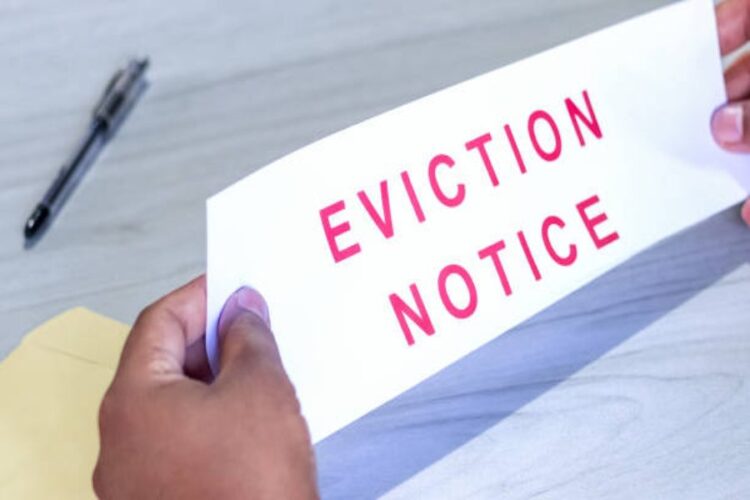Eviction takes place when a landlord legally requires a tenant to vacate a rental property due to issues such as unpaid rent, lease violations, or property damage. State laws regulate this process and often unfolds over several weeks or even months.
Facing the loss of a home is never easy. Fortunately, there are resources and support options that may help tenants navigate the situation and potentially prevent eviction. The following sections outline important legal information and practical financial strategies that can assist in maintaining housing stability.
Understanding the Eviction Process
Knowing and understanding the legal eviction process is crucial. It helps you stay one step ahead and know how to protect your home. Here’s how eviction typically works:
- The landlord gives the tenant written notice to move out. This notice explains the reason for eviction and the deadline to leave or solve the issue, often 3-30 days. Take note that every state has unique regulations about the written notice. For instance, Massachusetts requires a 14-day notice for nonpayment, while Florida gives 3 days. Ensure to check your state’s laws to know your rights and laws,
- If the tenant fails to move out or pay the rent, the landlord may file a lawsuit in court. The tenant must show up in court, explain their side, produce evidence, and fight the eviction. If the tenant doesn’t show up, the case is lost automatically,
- After the hearing, the judge will give their verdict. If the tenant wins, they can continue residing in the property. On the other hand, if the landlord wins, the tenant will have to leave, typically in a couple of days or weeks,
- If the tenant loses in court and refuses to leave the property, the landlord may obtain a “writ of possession.” This court order allows a sheriff to remove the tenant and their belongings from the property.
Your Legal Rights During Eviction
When facing eviction, you have rights; knowing them can help you avoid being illegally removed from your property. A loan for eviction from credible sources can help you, so it’s best to consider exploring these options. With that said, rights may vary by state, but the ones below are the most basic and should apply to you, whichever state you’re living in.
Right to a Fair Process
Your landlord cannot just evict you. They must abide by the law, which entails serving you with notice and bringing you before the court. No one can take you away without a judge’s permission, and you have an opportunity to present your case in court.
No Retaliation
Tenant rights preserve your ability to advocate for a safe and livable home by prohibiting landlords from punishing you for exercising those rights. Your landlord cannot take revenge by attempting to evict you, increasing your rent, or discontinuing services if you report a problem, such as a broken heater, mold, or other maintenance difficulties, or if you join a tenant association to demand better conditions.
Eviction vs. Lease Ending
It’s critical to comprehend the distinction between eviction and a lease termination because it influences both your legal strategy and your eligibility for financing. A landlord may attempt to evict you for many reasons, such as nonpayment of rent, violation of the lease terms (such as having unapproved roommates), or damage to the property.
In contrast, non-renewal—sometimes called a “holdover”—happens when a lease ends and the landlord chooses not to extend it. While it typically requires 30 or 60 days’ notice, it’s not considered a formal eviction and may not qualify as a valid reason for emergency rental assistance or funding. Selecting the appropriate funding path and avoiding wasting time on ineligible programs is easier when you know whether you are facing eviction or non-renewal. Consult legal assistance and review your lease and notices if you’re unsure.
Funding Options to Avoid Eviction
Money can be obtained in a variety of ways to prevent eviction. Here’s what’s available:
Online Emergency Loans
Online emergency loans can be a lifeline for renters who need money fast to pay back past-due rent and prevent eviction. They are particularly beneficial for renters who require money before a court hearing or might not be eligible for other forms of assistance because of stringent income regulations.
These loans are accessible and adaptable, and they are made to help you fill the gap so that you can continue living in your house and paying off your rent. The primary categories of online emergency loans that tenants can access include installment, payday, and title loans.
Government Programs
Government programs assist those facing the harsh realities of eviction by paying back utilities or rent directly to landlords. Here’s the catch: there’s no need to return the money.
One example is the Emergency Rental Assistance (ERA) program, which provided $46.55 billion in federal funding to help renters during the COVID-19 pandemic. Some states, including Colorado, still provide ERA funding, covering up to $10,000 for utilities or rent. However, the Colorado Division of Housing frequently requires landlord cooperation, such as signing documentation. In addition, there are state-specific programs like the Texas Rent Relief program, which helped 323,000 households before it ended, and localities like Philadelphia continue to offer rental aid.
Generally, you must be a low-income tenant with an eviction notice to qualify. Supporting documentation, such as a lease and evidence of income, is required. It’s essential to move fast because these programs frequently have strict deadlines and great demand.
Nonprofit and Community Help
With a strong commitment to helping out their communities, these organizations offer assistance specifically designed for tenants in need, preserving the stability and security their houses provide. Program-specific eligibility varies, but it generally targets low-income renters facing eviction and usually requires documentation such as proof of income, a lease, or an eviction notice.
Since each state has its own programs, you must search locally. Try the following:
- Find programs by state via the CFPB Rental Assistance Finder
- Renters might find assistance from HUD Rent Relief
- To learn about local programs, call or visit 211.org
- Visit county or city websites
Your Path Ahead
Eviction can harm your credit, make it difficult to find another place to rent, and even result in homelessness. Plus, it costs cities millions of dollars for shelters and other assistance, so preventing it saves everyone’s problems. That’s why it’s so critical to respond quickly. You can take charge and prevent eviction by being aware of the procedure, using your legal rights, and obtaining funding through government subsidies, charitable donations, or quick online loans.










